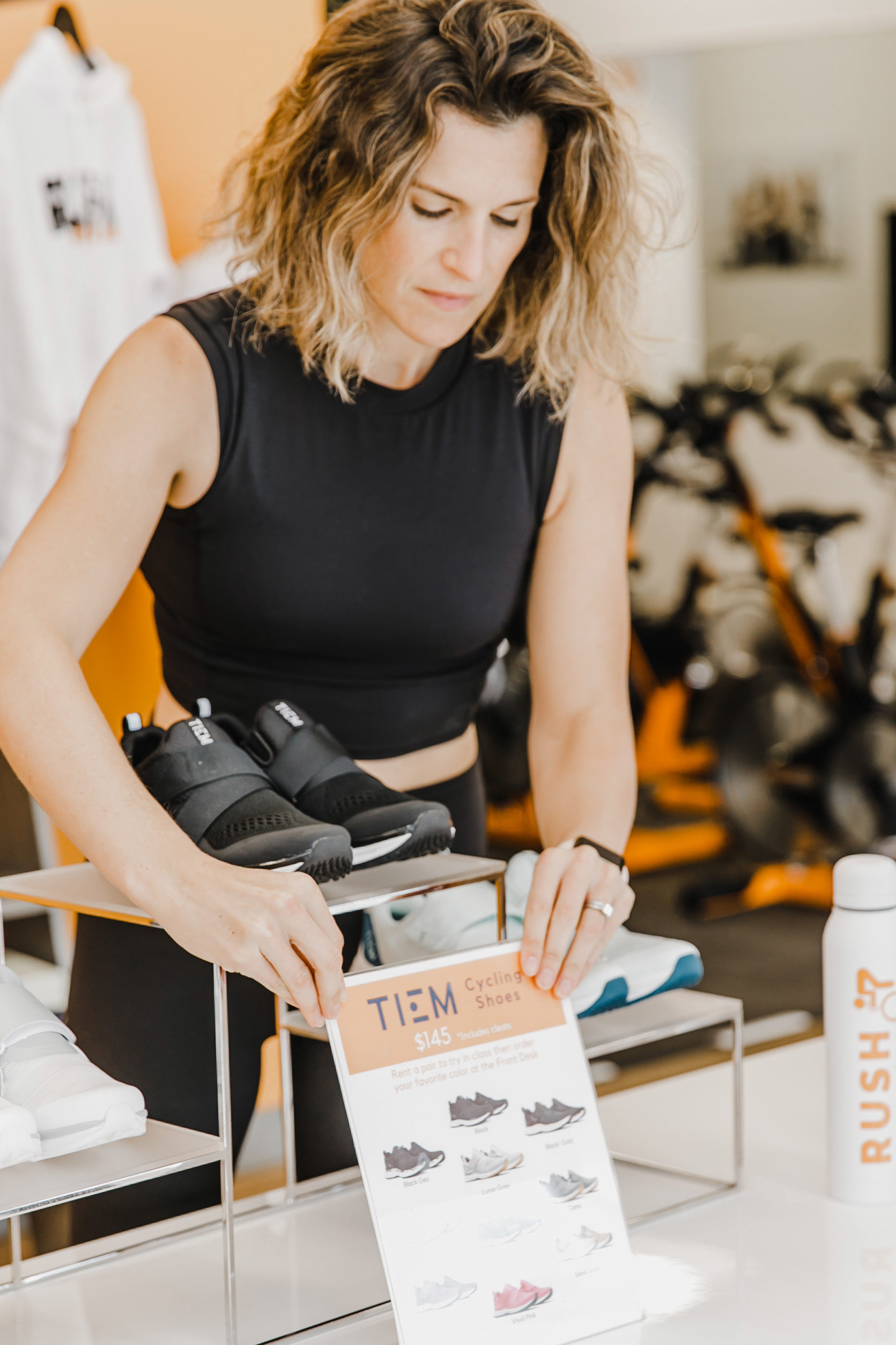
For most small business owners, myself included, the second week of March was probably one of the worst weeks on record. While most of us were scrambling, trying to figure out what to do now that our profits and revenue streams were hitting such a tall wall, Katie Atterbery was over in San Diego, CA, doing the opposite of breaking a sweat.
We sat down (virtually, across the country) with Katie this week, and she walked us through how she tackles her business on a day to day basis, that sets her up with stability and savings. See below for our biggest takeaways from the episode, and don’t forget to have a listen!
#1. Always lead with long term values.
Katie and I chatted a ton about what happened those first few weeks of COVID. If you remember, a ton of studios were renting out equipment as soon as we realized studios were going to need to remain closed for more than a week. And we get it – anything you can do to pay the bills. But Katie knew that renting out some bikes, when her community was so vast and dedicated, would be a short term revenue driver, with a long term retention problem.
Katie says, “We were closed for 15 weeks. What I did during that time was just stay connected to our clients. I didn’t actually end up renting out our equipment, which was something a lot of people did. For me, I only had 47 bikes, and I knew 300 people personally in our community. And it would have been really hard for me to make the decision which 47 people were the lucky ones to get a bike. And so rather than pick you, I just said I don’t have enough bikes for anyone, therefore, no one gets a bike. And I think people really came to value that everyone was seen as equal.” Wow.
#2. Know your numbers – every single day.
One of the things that makes Katie’s studio so successful is the eye she keeps on her financials. “Have three spreadsheets that you look at, every single day”, she tells us. She even goes as far to migrate her own data from a software platform like MindBody, because of occasional faulty reporting. We don’t blame her – oftentimes, we’ve seen some reports look slightly different day to day, and these numbers can make or break the next investment you can make on behalf of your business.
So what are these three spreadsheets?
Take notes, because this was some valuable business advice.
1. Basic financials. “I track every penny out, I track every penny in, and I see how those are comparing against the previous month, how those are helping to prepare what I’m going to spend next month, and I always just check to make sure I have enough in my bank account to pay not only what’s going out tomorrow, but the next couple of months that are upcoming. So there’s a daily tracker of that, and there’s a monthly where I can see the trends.” Know your revenues, people! “What I also look at it what’s coming in from memberships vs. class packs, and where people are buying. Did I sell more apparel this month, or less? So I roll those daily financials into a monthly – it helps huge with cost to see why supplies were higher this month than last. One of the biggest things that helped me get out of the red in my first year was to see not just where the money was coming from, but where it was going.”
2. Attendance Trends: “The second spreadsheet I look at is how many people are coming in every day. How many paid people showed up to classes, by instructor, day, week, month, and quarter. I’ve done that every day for four years, and what I’ve learned is the seasonality of my business – we’re in a very residential area, and come April when spring break happens, I know it’s going to be a low attendance month. So I know not to freak out, and to have the understanding, has helped me plan for the ups and downs.” (This spreadsheet) helps me to evaluate the success of each instructor a bit better. I think a lot of studio owners think they know their best instructors, anecdotally, but this way I can have intelligent conversations with my instructors and have that data and see how they’ve improved over time.”
3. First Class Conversions Spreadsheet: “The number of people who came in to take their first class, which instructor they took a class with, and did they purchase a package afterwards. It allows me to see if we’re doing a good job. Are we providing a great experience to our first time riders? If you’re not tracking whether those people are coming back or not, you’re not doing a good job.”
Tune in to Katie’s podcast to learn even more tips and tricks from this savvy business owner!
Ps if you’ve loving the podcast, subscribe, rate & review goes a LONG way to support it! Thank you!

Be the first to comment